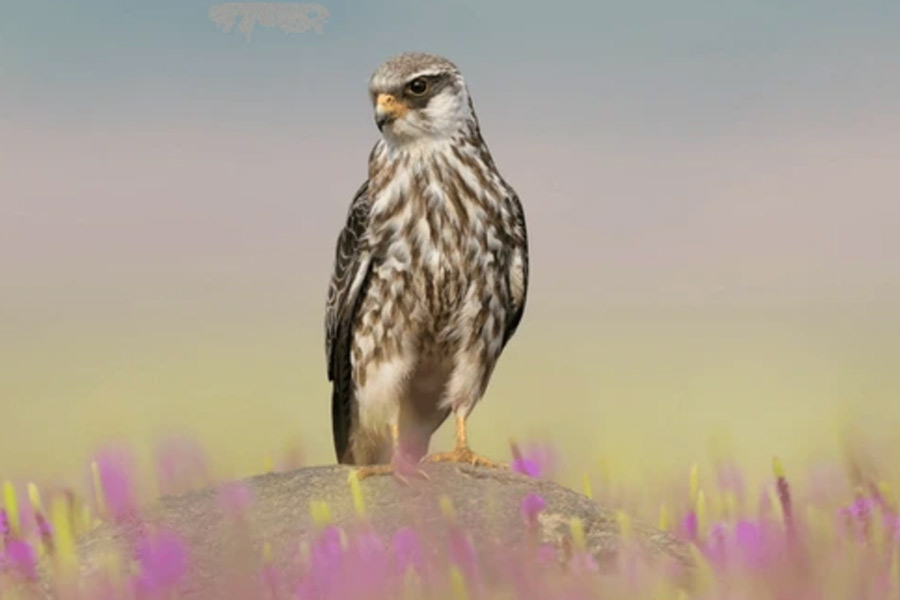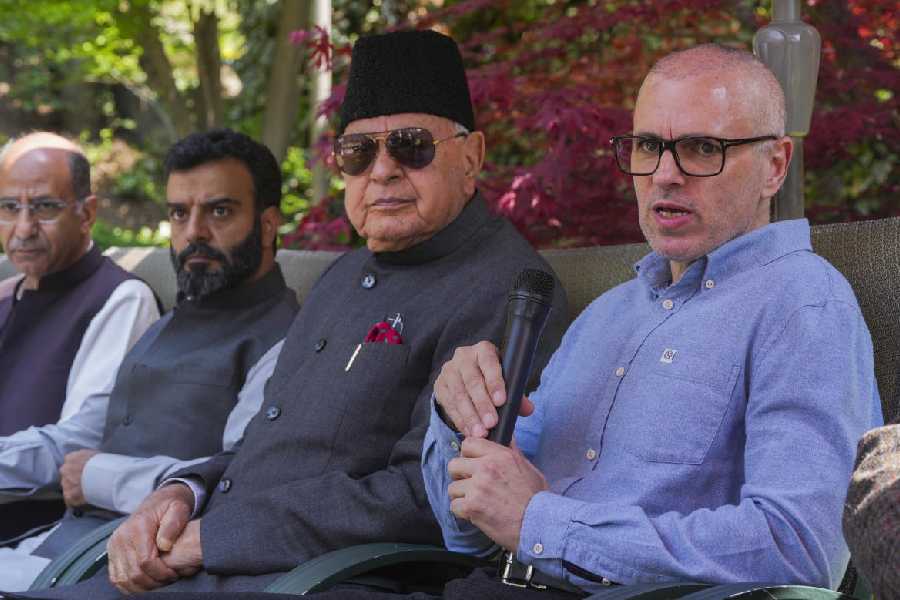With winter setting in, the Jodhpur Jhal wetland in Mathura has transformed into a haven for migratory birds from Central Asia, Siberia, Tibet and Mongolia.
The wetland has come alive with the chirp of diverse species, including rare visitors such as the mallard duck and the common pochard, alongside flocks of the bar-headed goose, painted stork and the northern shoveler, officials said.
"Most of the regular visitors from Central Asia, Tibet, Bhutan, Mongolia, Siberia, and other regions have already arrived," said Dr KP Singh, a wildlife ecologist with the Biodiversity Research and Development Society.
Owing to the panoramic natural beauty and the expansive wetland area, the number of avian visitors has significantly increased over the past decade, he said.
The officials noted that the wetland so far recorded 192 bird species, of which 70 were regular visitors.
Rare species such as the mallard duck and the common pochard have also begun arriving, drawn by the wetland's favourable and serene environment, they said.
The regular migratory bird species spotted in Jodhpur Jhal include the greylag goose, garganey, gadwall, common teal, Eurasian wigeon, northern pintail, pied avocet, painted stork, tufted duck, ruddy shelduck, common redshank, greenshank, common sandpiper, little stint, Temminck's stint, Kentish plover, little-ringed plover, bluethroat, Siberian stonechat, citrine wagtail, white wagtail and the white-browed wagtail.
The wetland is easily accessible via Highway 19 up to Farah town, from where visitors can take a side road leading toward Raipura Jat village to reach Jodhpur Jhal.
The ongoing arrival of winged visitors has brought the wetland into focus.
Uttar Pradesh Braj Teerth Vikas Parishad vice-chairman Shailjakant Mishra, who visited the wetland last week, said a grant of Rs 8.66 crore had already been allocated for Jodhpur Jhal's development.
Highlighting the broader goal behind the initiative, Mishra said, "We plan to develop a sanctuary across 64 hectares to make it a major attraction for tourists visiting Agra while opening avenues for employment for local youngsters." Outlining the development plan, the officials said efforts were underway to rejuvenate the natural ecosystem spread across a four-kilometre circumference.
The initiative includes creating a habitat conducive to both migratory and terrestrial birds. A dense forest is being developed to provide nesting grounds for terrestrial birds. A green belt will be established once the ongoing civil work is completed.
The development will feature seven water bodies, 13 islands, and a 2,200-metre nature trail with 13 huts for the visitors to rest. A watchtower will be constructed to facilitate bird-watching and three solar-powered pumps installed to maintain water levels in the ponds.
The officials also revealed plans for a study centre focused on biodiversity, a seminar hall, an interpretation centre and ecotourism training programmes for local youngsters.
Facilities such as parking, canteens and restrooms will be developed to improve visitor experience.
The effort to develop Jodhpur Jhal has received significant appreciation from environment experts.
Environmentalist NK Goswami said, "The Uttar Pradesh Braj Teerth Vikas Parishad's efforts to develop Jodhpur Jhal will make it an alluring destination for tourists visiting Agra to see the Taj Mahal."
Except for the headline, this story has not been edited by The Telegraph Online staff and has been published from a syndicated feed.










